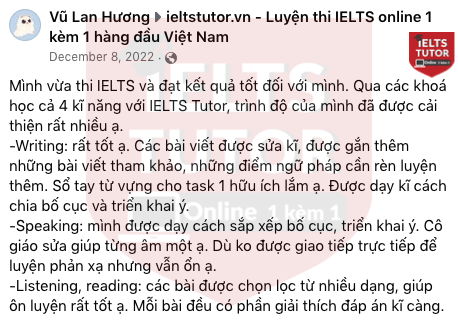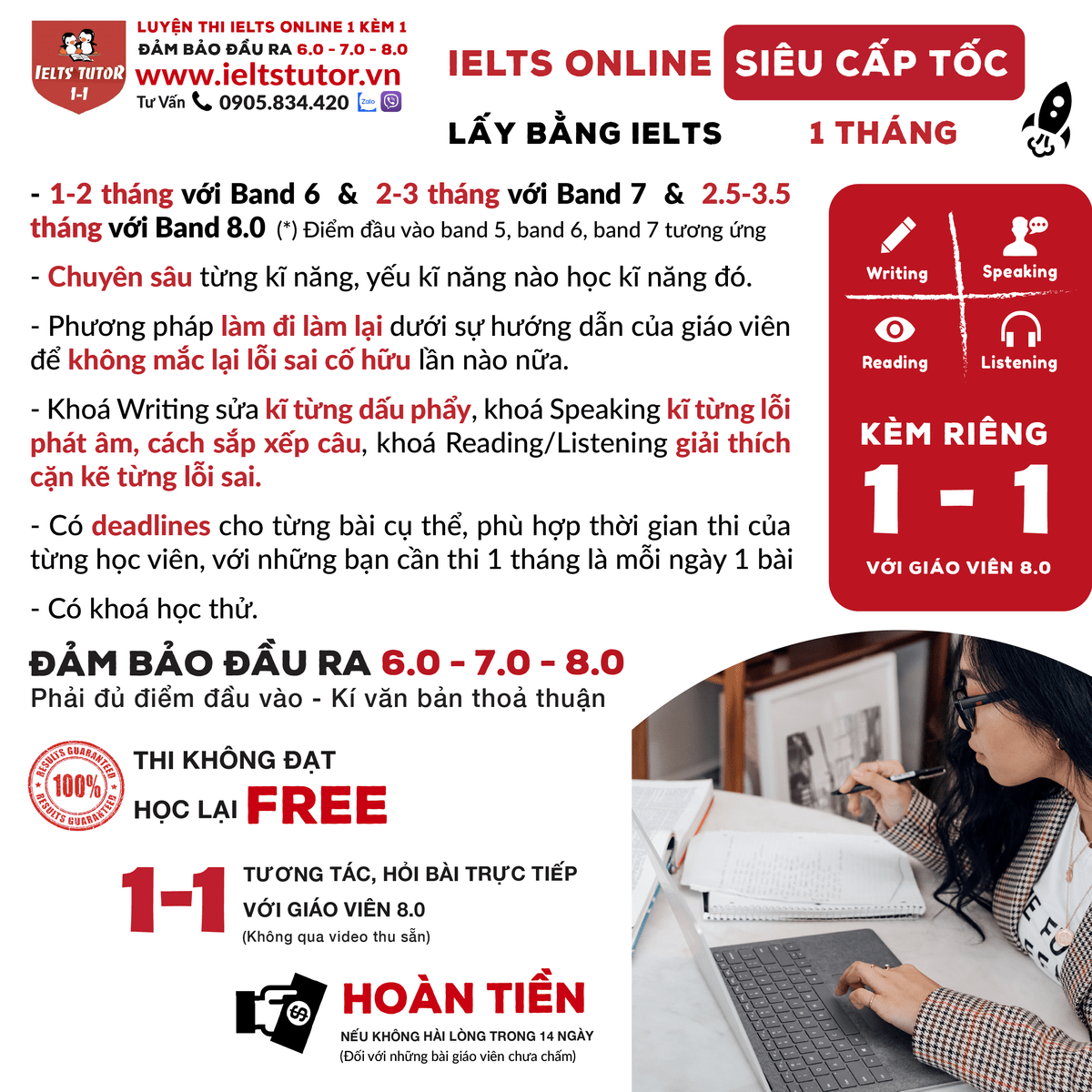III. Đề ganh đua IELTS READING: New Zealand’s early crafts and traditions (thi ngày 20/02/2023)
The first groups of people to tướng discover New Zealand came from Polynesia. Exactly when these explorers arrived has often been a matter of debate, but today the general understanding is that it was during the 13th century that their canoes eventually landed on New Zealand's shores. In some ways the new country must have seemed lượt thích an ideal place to tướng settle: the land was fertile, and thick forests provided firewood, shelter and buildingmaterials. Still, life would have been challenging for the different Polynesian tribes, who had to tướng adapt to tướng a new environment. The tribes only began to tướng refer to tướng themselves as Maori, meaning 'ordinary people', when Europeans in tìm kiếm of new opportunities began arriving in the 18th century. To the Maori, of course, the European settlers and sailors were not 'ordinary', but very strange.
It was not only a knowledge of canoe-building and navigation that the Polynesians brought to tướng New Zealand. They were also skilled craftsmen. There is archaeological evidence that the tools they produced were of high quality and would have enabled tribes to tướng plant and harvest crops. Craftsmen were also occupied with making weapons such as knives and axes, which were used for both construction and fighting. Interestingly, some crafts that had once been popular in Polynesian islands were no longer done in New Zealand, although researchers are unsure why. Pottery is an example of this, despite the fact that the clay needed to tướng make pots and bowls could easily be found in the new country.
The Maori word whakairo can be translated as 'decorative work' — this can refer to tướng bone, wood and greenstone carving. Although Maori carvers were influenced by their Polynesian heritage, they developed their own style, including the curved patterns and spirals inspired by New Zealand plants. The same term can also apply to tướng weaving; the crafting of, for example, woven baskets and mats all required knowledge and skill. Carving greenstone, or pounamu as it is called in Maori, was a long process, requiring great patience. Further, because of this mineral's rarity, any greenstone object, such as a piece of jewellery or cutting blade, was a prized possession. For that reason, it was the few people of high status rather phàn nàn low-ranking members of a tribe who would possess such objects.
As New Zealand had no native mammals except for bats, dolphins and whales, Maori largely had to tướng depend on plants to tướng provide material for their clothing, including their cloaks. Weavers experimented with the inner bark of the houhere, the lacebark tree, but found it unsuitable. But the dried-out leaves and fibres of the flax plant provided a solution. Once a cloak had been woven from flax, it could be decorated. Borders might be dyed đen sạm or red, for example. In the case of superior ones made for chiefs or the more important members of a tribe, feathers from kiwi, pigeons or other native birds might be attached. All flax cloaks were rectangular in shape, ví had no sleeves, and neither was a hood a feature of this garment. Short cloaks were fastened around a person's neck, and came only to tướng the waist.
Pins made of bone, wood or greenstone allowed longer cloaks to tướng be secured at the shoulder; these were a type that were often used for ceremonial occasions. Of course, the construction of the cloaks was influenced by the plant material available to tướng Maori weavers. This meant that cloaks were loose-fitting, and while they protected wearers from New Zealand's strong sunshine, they were not useful during the winter months. A cloak made from fur or wool could provide insulation from the cold, but not ví a cloak made of flax.
The warriors of a tribe required a different kind of cloak to tướng help protect them. To create these special cloaks, the tough fibres of the mountain cabbage tree were used instead. It is not clear to tướng researchers what the entire process involved, but they believe the fibres were left to tướng soak in water over a period of time in order to tướng soften them and make them easier to tướng weave together. Later, once the whole cloak had been constructed, it would be dyed đen sạm. To bởi this, Maori weavers covered it in a special kind of mud they had collected from riverbeds. This was rich in iron due to tướng New Zealand's volcanic landscape. The particular advantage of these cloaks was that the tough cabbage tree fibres they were woven from could reduce the impact of spear tips during a fight with enemy tribes. It is fortunate that some cloaks from the 1800s still survive and can provide us with further insight into the materials and construction techniques that Maori craftsmen used.
Questions 1-6
Do the following statements agree with the information given in Reading Passage 1?
In boxes 1-6 on your answer sheet, write:
TRUE If the statement agrees with the information
FALSE If the statement contradicts the information
NOT GIVEN If there is no information on this
1. It is now widely thought that humans reached New Zealand in the 13th century.
2. The first Europeans to tướng come to tướng New Zealand were keen to tướng trade with Maori.
3. Members of Maori tribes were responsible for either tool- or weapon-making.
4. A craft that the Maori once practiced in New Zealand was making pottery.
5. Weaving baskets and mats was seen as a size of decorative.
6. It used to tướng be common for everyone in a Maori tribe to tướng wear greenstone jewellery.
Questions 7-13
Complete the notes below.
Choose NO MORE THAN TWO WORDS from the passage for each answer.
Write your answers in boxes 7-13 on your answer sheet.
1. Fertile
- Vietnamese: Màu mỡ, phì nhiêu
- IELTS TUTOR xét ví dụ kể từ bài xích đọc: "...the land was fertile, and thick forests provided firewood, shelter and building materials."
2. Adapt
- Vietnamese: Thích nghi
- IELTS TUTOR xét ví dụ kể từ bài xích đọc: "...who had to tướng adapt to tướng a new environment."
3. Archaeological
- Vietnamese: Thuộc về khảo cổ học
- IELTS TUTOR xét ví dụ kể từ bài xích đọc: "There is archaeological evidence that the tools they produced were of high quality..."
4. Weapon
- Vietnamese: Vũ khí
- IELTS TUTOR xét ví dụ kể từ bài xích đọc: "Craftsmen were also occupied with making weapons such as knives and axes..."
5. Pottery
- Vietnamese: Đồ gốm
- IELTS TUTOR xét ví dụ kể từ bài xích đọc: "Pottery is an example of this, despite the fact that the clay needed to tướng make pots and bowls could easily be found in the new country."
6. Decorative
- Vietnamese: Trang trí, đem tính trang trí
- IELTS TUTOR xét ví dụ kể từ bài xích đọc: "The Maori word whakairo can be translated as 'decorative work'..."
7. Carving
- Vietnamese: Chạm khắc
- IELTS TUTOR xét ví dụ kể từ bài xích đọc: "...this can refer to tướng bone, wood and greenstone carving."
8. Pounamu
- Vietnamese: Đá xanh rì (ngọc bích của những người Maori)
- IELTS TUTOR xét ví dụ kể từ bài xích đọc: "Carving greenstone, or pounamu as it is called in Maori, was a long process..."
9. Cloak
- Vietnamese: Áo choàng
- IELTS TUTOR xét ví dụ kể từ bài xích đọc: "As New Zealand had no native mammals... Maori largely had to tướng depend on plants to tướng provide material for their clothing, including their cloaks."
10. Fibre
- Vietnamese: Sợi
- IELTS TUTOR xét ví dụ kể từ bài xích đọc: "...the tough fibres of the mountain cabbage tree were used instead."
11. Insulation
- Vietnamese: Sự hạ nhiệt, cơ hội điện
- IELTS TUTOR xét ví dụ kể từ bài xích đọc: "...a cloak made from fur or wool could provide insulation from the cold..."
12. Weave
- Vietnamese: Dệt
- IELTS TUTOR xét ví dụ kể từ bài xích đọc: "Once a cloak had been woven from flax, it could be decorated."
13. Soak
- Vietnamese: Ngâm
- IELTS TUTOR xét ví dụ kể từ bài xích đọc: "...the fibres were left to tướng soak in water over a period of time in order to tướng soften them..."
14. Volcanic
- Vietnamese: Thuộc về núi lửa
- IELTS TUTOR xét ví dụ kể từ bài xích đọc: "...due to tướng New Zealand's volcanic landscape."
15. Insight
- Vietnamese: Sự nắm vững thâm thúy sắc
- IELTS TUTOR xét ví dụ kể từ bài xích đọc: "...can provide us with further insight into the materials and construction techniques..."
IELTS TUTOR lưu ý:
- 1. TRUE
- 2. NOT GIVEN
- 3. NOT GIVEN
- 4. FALSE
- 5. TRUE
- 6. FALSE
- 7. FEATHERS
- 8. HOOD
- 9. SHOULDER
- 10. INSULATION
- 11. WATER
- 12. IRON
- 13. SPEAR TIPS



